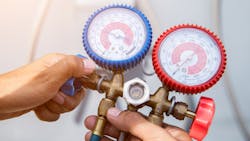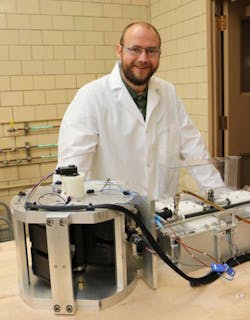CaloriSMART Compares Magnetocaloric Ability of Materials to Provide Heating and Cooling
Gas compression-cycle-cooling is the standard used today for air conditioning and refrigeration. It is an old and very mature technology. The outdated cooling technology is one of the most pressing issues of a rapidly growing global population. The problem with the current standard is that It uses too much energy and it tends to depend on greenhouse gases as the refrigerant.
One possible alternative cooling technology is called magnetocaloric cooling. It uses an active solid material that can provide heating or cooling depending on the magnetic field surrounding that material and how it is varied. This system uses an active solid, and the thermal phenomenon is also reversible.
For the last two decades, materials engineers searching for compounds that can generate strong thermal effects when cyclically acted upon by a magnetic field.
But how those materials will perform in an actual refrigeration system is best answered through engineering, so Ames engineers built a testing device they call CaloriSMART (Caloric Small-scale Modular Advanced Research Test-stand). It can rapidly test new materials to see how well they would work in a magnetocaloric refrigerator. It was developed and built three years ago, and it has put Ames in a good position to develop the cooling technology.
The device tests materials’ cooling capabilities using small quantities of the material in just a few hours and is flexible enough to test the same material in different forms. The device has already demonstrated results that suggest the expected performance of a larger-scale system, and helped scientists discover a new way of benchmarking the performance of magnetocaloric systems—the exergetic power quotient.
Just as SEER is the current industry standard for describing the energy efficiency in current gas compression devices, the exergetic power quotient does the same type of ranking for magnetocaloric devices.
“We need to be able to see how well we’re using the most expensive component of the system, the magnetic field,” says Julie Slaughter, a researcher at Ames. “Having a metric that lets us compare the performance of these systems against {something missing} makes it easier to determine if we’re getting the maximum performance out of the material, or whether we need to be looking at inefficiencies in the system.”

